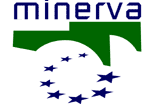Quality criteria for public cultural Web applications: recommendations and guidelines
Appendices
APPENDIX 1
Minerva method
of quality evaluation
The Minerva
criteria framework for Public Cultural Web Applications need to
be complemented with methods for measuring quality. The proposed
measurement method is a customized version of the MiLE method (developed
by Politecnico di Milano and the University of Italian Switzerland
in Lugano).
MiLE is a a
goal driven measurement "framework" for systematically
evaluating quality, i.e. a "Meta-method" that can be instantiated
to address the specific characteristics of a specific application
domain (in this Handbook, a PCE category). Given a set of quality
criteria which are relevant for an application domain and a set
of goals which are relevant for an application domain, MiLE defines
a procedure to measure the quality of a Web application in the specific
domain.
The specialized
version of MiLE could measure the quality criteria defined by the
MINERVA Quality handbook:
- general criteria for Web applications;
- specific criteria for cultural Web applications;
- specific criteria for cultural Web applications in a specific cultural category (e.g., museums, exhibitions, libraries, archives, etc).
The MiLE-MINERVA
method defines which types of actions (called "inspection tasks")
the quality expert should perform on a cultural Web application
to evaluate quality and associates MINERVA quality criteria and
goals to inspection tasks. Besides, It provides a procedure to measure
criteria against application features, and to weight them with regard
to goals.
By the MiLE-MINERVA method the quality inspector could:
- select the relevant part(s) of the application (s)he wants to evaluate
- perform the inspection tasks
- assign values to the criteria associated to the executed tasks
- weight the values according to goals
APPENDIX 2
Repertory of
national rules on Web applications: presentation table goals and
objectives
In addition
to the Guidelines and Recommendations a list is being compiled.
This list offers the most complete and updated panorama of production
of standards and regulations - both at the level of the community
and of the single members of the European Union - relative to Web
Applications. This is done with the conviction that information
of the direction and policies currently in act in the differing
national situations is an indispensable step towards the adoption
of uniform, shared qualitative criteria.
To this end,
throughout the course of the next six months of the Italian Presidency,
a directory will be available for consultation on the Minerva site.
It will have periodic updates and, where possible, links to the
complete text of each single regulation and standard.
Structure
and criteria
It will be an un-annotated list, organised by nation and within which data will be eventually organised according to the differing sources of the laws.
Indeed, this
research should not be considered as being limited to legislation
at the State and regional level (which appears on first view, in
this specific area, to be still very limited in terms of quality.);
Rather, the
study aims to include any normative document from public sources
which is relevant to Web application, with particular reference
- on the side of the "addressee" of the regulations -
to the PCWA, and - on the side of the contents - to the subject
of usability and accessibility.
To the tables
relative to the single nations, references to documents from sources
in the community and of inter-governmental sources, will be added.
Some international standards will also be included.
From the point
of view of chronological cover, the duration and validity of the
norms will be taken into account and in any case, all documents
from 1993 to the present day will be included. As far as on-line
sources are concerned, in view of periodic monitoring, the last
visit to each resource will be indicated.
Methodology
and sources
In attempting
an exhaustive cover in this area, certain factors must be considered.
In the first
place, the research is carried out in the context of documentation
from public sources, which can be considered critical from the point
of view of accessibility and qualitative organisation of the documents.
Secondly, documents
of limited circulation or which are less "visible" are
also considered relevant (circulars, deliberations, etc.)
Difficulties
increase because many countries are involved, with different legal
traditions and a multitude of lists and registers as sources; indeed,
the recent extension of the European Union to 25 Member States and
the prospective of further expansion mean that the range of the
study will become wider in the long term.
In a similar
panorama, alongside the role of official European and national gazettes/papers
(whose updating goes to the disadvantage of semantic indexing of
texts), and of data banks on regulations which are available on
CD-ROM (the internal organisation of data to the end of research
goes to the disadvantage of updating), it would seem that the role
of sources on Internet resources is central, even considering all
the measures for caution which the means demands.
It is, indeed,
ever more the case that national governments, inter-governmental
and non-governmental organisations are using the Web to spread information,
sometimes in addition to or even in substitution of press releases.
The result is greater access to documentation from public sources;
it is for this reason that filters that are appropriate, relevant
and pertinent to expectations should be placed on availability of
information.
In this initial
phase filters should be limited to lexical filters obtained from
main Key words such a Web and Internet, variously combined with
Digitalisation, Accessibility, Quality, Usability and Public (in
the various languages of the list/collection)
|


